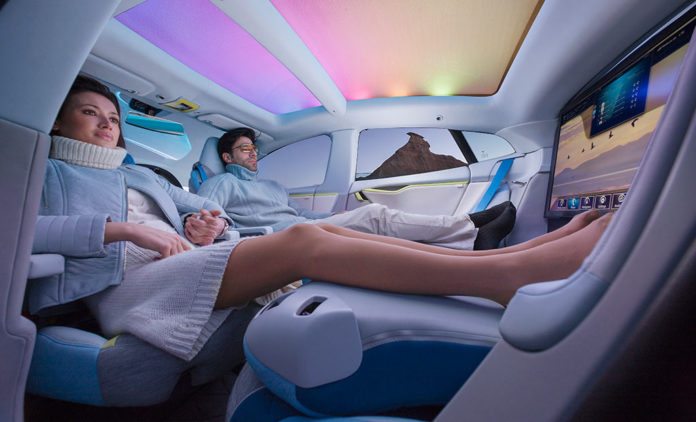Owing and driving a car in cities is nothing less than a daunting task. Following traffic laws, watching out for pedestrians and other vehicles, paying hefty road taxes, being stuck in traffic jams for hours on, and other similar problems are not only taking a toll on our health but our overall productivity as well.
Thankfully, we have a sigh of relief in the form of autonomous vehicles (AV). We are already witnessing new auto-pilots rolled out almost every week. Futuristic urban thinkers consider self-driving vehicles as the foundation of an urban transportation utopia, where mobility is cheap and clean.
Autonomous vehicle technology is rapidly evolving, and the window for action is closing. The adaptation of AV will be much faster than the adaptation of internal combustion cars back in 20th century. The most pressing question as of now is whether mega urban centers and cities can redefine and redesign their infrastructure in time to accommodate the influx of these cars.
A study recently conducted by the Davis Institute of Transportation Studies, University of California, and the Institute for Transportation and Development Policy (ITDP) has revealed three possible scenarios for vehicle use by 2050. In the first, business-as-usual scenario, we’ll continue using the 20th-century technology, which includes private ownership of internal combustion engines. The number of privately owned vehicles will grow to 2.1 billion by 2050, with 4600 megatonnes of carbon emissions. In the “Two revolutions” (2R) scenario, electric cars will start dominating the roads by 2030, and automated cars will become a norm by 2050. Still, private ownership of cars will remain, and the number of vehicles on the road will increase to 2.1 billion by 2050, with 1700 megatonnes of carbon emissions. In the “Three revolutions” (3R) scenario, we’ll not only adopt 2R technology but also promote ride-sharing culture with on-demand availability. Urban infrastructure will focus more on walking and cycling. The number of vehicles will plummet to 0.5 billion by 2050, with only 700 megatonnes of carbon emissions.
The US, Europe, China, and India are going to be the major contributors of carbon emissions by 2050. Many countries will have to cut their carbon emissions by half for proper implementation of the Paris agreement and to prevent a two-degree Celsius rise in global temperature. Looking at the US’ greenhouse emissions chart for 2015 by economic sector, we see that electricity tops it with a 29% share, while transportation’s contribution is 27%.
Lewis Fulton, co-director of the Institute of Transportation Studies’ Sustainable Transportation Energy Pathways (STEPS) program at UC Davis, expressed his views on how much urban transportation affects the climate since “Cars in cities are like one-tenth of [the transportation] number.” Fulton further added that “Cars in general, is probably one-fifth of transportation’s carbon footprint.” Urban transport has a huge role in the climate-change equation. Electric autonomous vehicle technology is the only way to reduce the harmful effects contributed by urban transportation in the climate-change dilemma.
Right now, the US alone has 300 million vehicles on the road. Thankfully, the country is on target to see one million electric cars on the road by 2020. The remaining 299 million will be conventional vehicles with an average age of 11 years. A complete turnover is still going to take almost 15 to 20 years, and around 40 years to see only driver-less cars on the road. Ride sharing plays a significant role in reducing the carbon impact by 80%. Services like Uber and Lyft aren’t the feasible solution; we’ll have to rely on mass transit systems like subways, metros, and trains to lessen our carbon footprint.
Apart from reducing global warming and preventing climate change, AVs promise various other benefits in an urban infrastructure.
AVs will revolutionize intra-city travel. Due to their very nature, AVs will be compact and space efficient, making them perfect for urban use. They will minimize the need for parking spaces, reduce lane spacing, and open up more living space in houses.
Within 15 years, the world will have more than 1.4 million people aged 60 and more. With limited mobility options due to aging, the AVs will keep the elderly mobile and independent.
Since it is an emerging technology, urban centers and cities will have the upper hand in regulating the market and developing policies. Cities can set the rules in favor of the public by leveraging manufacturers to focus on the needs of the under-served population.
One school of thought argues that the rise of electric AVs will increase the traffic due to decreased cost of traveling. People will use their self-driving cars to run frivolous errands, and it might produce a rebound effect, increasing the energy consumption. They also argue that the transition to cleaner energy is going to be slower if it comes via the electrification of individual vehicles. It is also not possible to make sure that all the energy comes from carbon neutral sources, which diminishes the likelihood of cleaner energy.
The ex-mayor of New York City, Michael Bloomberg, is very optimistic about autonomous vehicles, but he also has his eyes on the critics. Bloomberg Philanthropies is working with Aspen Institute to provide a platform to the mayors of different cities to work together with senior leaders and experts. Their goal is to overcome the difficulties in the way of a driver-less world. The report, Taming the Autonomous Vehicle: A Primer for Cities, quoted Mr. Bloomberg as saying, “If Mayors collaborate with one another, and with partners in the private sector, they can improve people’s lives in ways we can only imagine today.”
We need to focus on the best case scenarios to maximize the good and minimize the bad. Cities should tap all the resources available to them. A complete turnover is going to need the involvement of all the stakeholders, including policy experts and investors at every level to come up with feasible solutions. The only question left to ask now is: if not us, then who. If not now, then when?


















